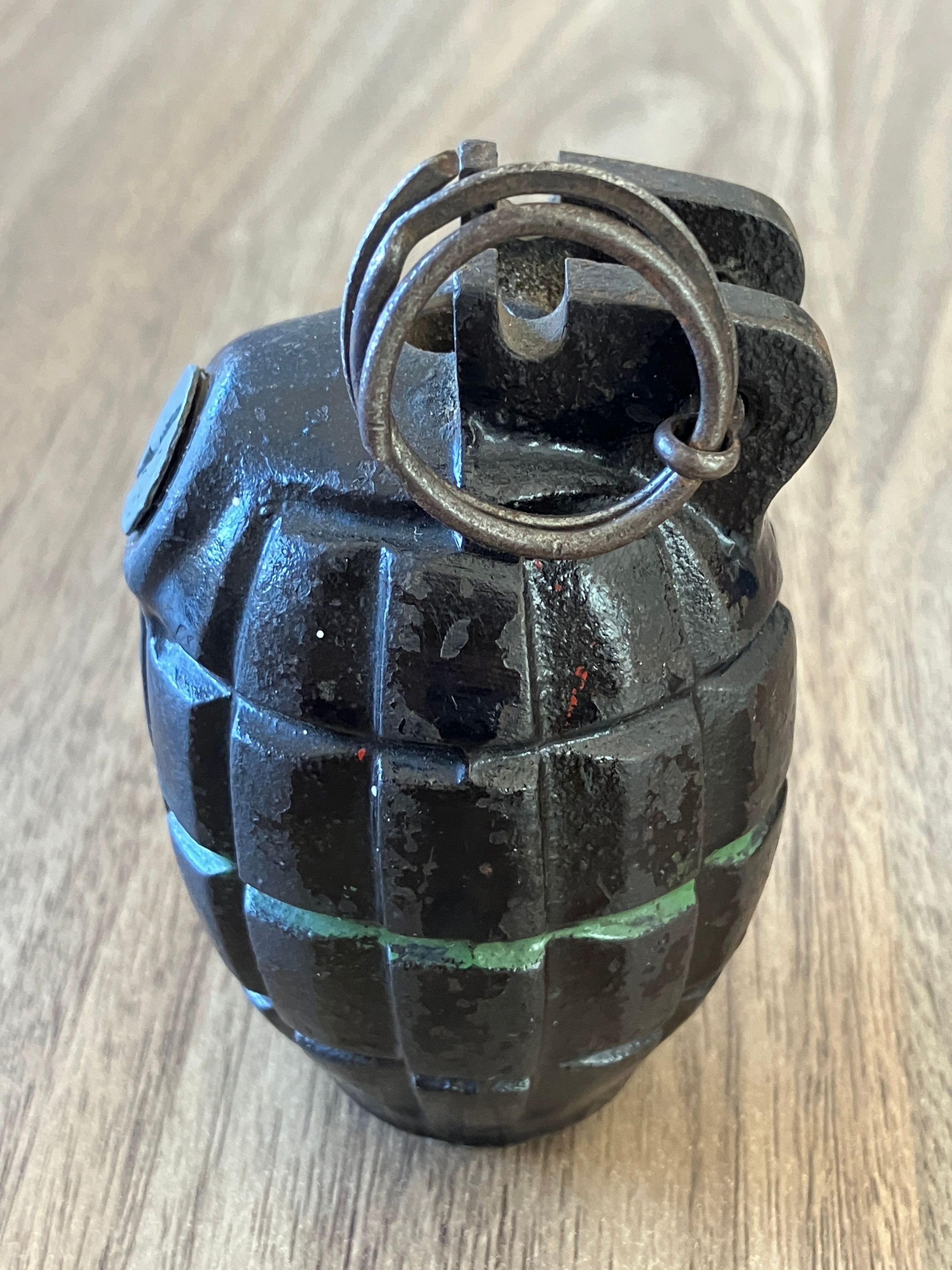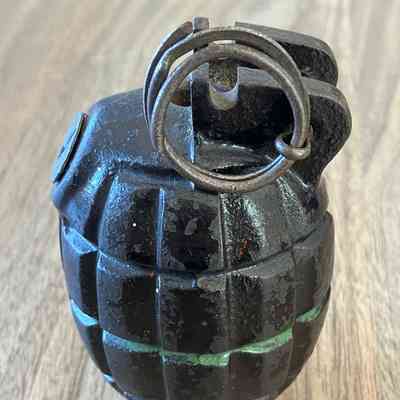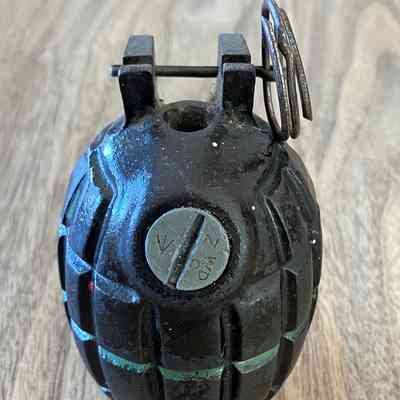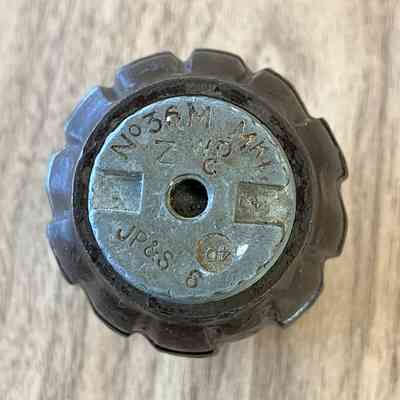WWII No36M MKI Mills Grenade (Inert)

2023.259
Side view of Mills grenade showing remnants of red Xs and green band.
Name/Title
WWII No36M MKI Mills Grenade (Inert)Entry/Object ID
2023.259Description
An inert (deactivated), incomplete WWII No 36M MKI Mills Grenade, dated 1940. Grenade is painted with black shellac, with a green stripe around its centre and the remnants of three red X's around the upper area. Pin is present as is the filling screw and baseplate. The grenade's lever has been removed.Use
Invented by William Mills in April 1915, WW1 versions were the No.23 and No.36, whilst the first version was the No.5. The later version included a threaded hole in the base to convert the hand grenade to a rifle grenade. The No.36 (and latterly the No.36M, ‘M’ standing for ‘Mesopotamia’, indicating that the grenade has been waterproofed), continued to be used in the Second World war and right up to 1972, when it was replaced by the L2 grenade. The base has the following information stamped into it: No 36M MK1 - The type of grenade Z - The material used (zinc) WDC - The foundry maker (Wolverhampton Diecasting Co.) JP&S - The manufacturer of the assembled grenade (Josiah Parkes & Sons, Willenhall, Staffordshire) 40 - The year of manufacture There is a threaded hole in the base of the base plug which is is for the attachment of a metal disk known as a ‘Gas Check’. This attachment allowed the grenade to be fired from a Lee Enfield rifle. A metal tube is fixed onto the rifle muzzle and the grenade with gas check is slid into it. Loaded with a special blank cartridge, when the rifle is fired the gas check acts like a piston, ensuring adequate propulsion of the grenade. The filler screw is on the upper side of the grenade, and also has a manufacturer stamp: JP&S. The grenades were assembled empty, before being sent to a ‘filling factory’, where it would be filled with Baratol explosive via the hole. These screws only act as a plug to cap the hole. A green band around the middle originally indicated an Amatol filling (1915–1920s), while it later indicated a Baratol or Trotyl filling (1920s–1970s). Three red Xs along each side indicates that it is the waterproofed No.36M model.Category
Equipment, Grenade, Weapon, War Memorabilia


